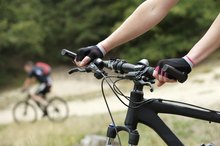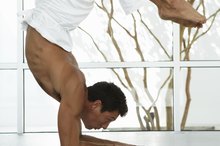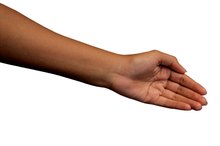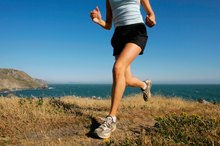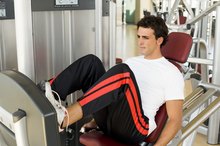What does fact checked mean?
At Healthfully, we strive to deliver objective content that is accurate and up-to-date. Our team periodically reviews articles in order to ensure content quality. The sources cited below consist of evidence from peer-reviewed journals, prominent medical organizations, academic associations, and government data.
The information contained on this site is for informational purposes only, and should not be used as a substitute for the advice of a professional health care provider. Please check with the appropriate physician regarding health questions and concerns. Although we strive to deliver accurate and up-to-date information, no guarantee to that effect is made.
What Causes Forarm Aches When Cycling?
Cycling offers an efficient form of low-impact cardiovascular exercise that can protect your joints against the wear and tear associated with other forms of exercise, such as jogging. However, any exercise comes with risks; muscle aches and pains, sprains and overuse injuries can happen with any sport. There are several reasons why your forearms might ache while cycling. If pain occurs frequently, stop cycling and see your doctor or physical therapist for a diagnosis and treatment plan.
If you are experiencing serious medical symptoms, seek emergency treatment immediately.
Muscle Aches
Gripping the handlebars for hours at a time and shifting the weight of your upper body forward onto your arms can stress your muscles. If you are new to cycling, you are even more vulnerable to muscle aches. To prevent forearm muscle aches when starting cycling, take shorter rides until your muscles become accustomed, and stretch your forearm muscles before and after each workout.
- Gripping the handlebars for hours at a time and shifting the weight of your upper body forward onto your arms can stress your muscles.
- To prevent forearm muscle aches when starting cycling, take shorter rides until your muscles become accustomed, and stretch your forearm muscles before and after each workout.
Handlebar Palsy
Cycling With Pinched Nerves
Learn More
Besides injuries to the face, handlebar palsy, or ulnar neuropathy, is one of the most common cycling-related injuries, according to Sports Injury Bulletin. The ulnar nerve, which runs down the forearm to the wrist, can become inflamed because of compression of the nerve at the wrist. Riding for long periods with your wrists in extension is one cause; another cause is stress on the nerve from the shock and vibration of uneven terrain that travel from the handlebars through your hands and wrists. Symptoms of ulnar neuropathy include tingling, numbness and pain in the outer forearm and it might extend to the hands and fingers.
- Besides injuries to the face, handlebar palsy, or ulnar neuropathy, is one of the most common cycling-related injuries, according to Sports Injury Bulletin.
- Riding for long periods with your wrists in extension is one cause; another cause is stress on the nerve from the shock and vibration of uneven terrain that travel from the handlebars through your hands and wrists.
Carpal Tunnel Syndrome
Carpal tunnel syndrome is a common overuse injury caused by compression of the median nerve at the wrist. According to Dr. David C. Rehak, carpal tunnel syndrome is not as common for cyclists as ulnar neuropathy and usually occurs due to hand and arm positioning. If a cyclist grips the handle bars on top and transfers too much upper body weight onto his wrists, this creates compression. The National Institute of Neurological Disorders and Stroke explains that the most common symptoms of carpal tunnel syndrome include burning, tingling, numbness and itching in the palm of the hand, and could include sharp pains in the wrist and forearm 1.
- Carpal tunnel syndrome is a common overuse injury caused by compression of the median nerve at the wrist.
- According to Dr. David C. Rehak, carpal tunnel syndrome is not as common for cyclists as ulnar neuropathy and usually occurs due to hand and arm positioning.
Treatment
Bicycle Seat & Nerve Damage
Learn More
Treatment plans for ulnar neuropathy and carpal tunnel syndrome will vary due to the severity of your condition. If the condition persists, see your doctor for a diagnosis. Hand pain and numbness can be signs of a more serious underlying condition, says Rehak. In both cases, taking pressure off your wrist will prevent further injury, which may mean suspending your cycling routine until your condition subsides. Stretching and anti-inflammatory medications can help relieve pain, and symptoms should resolve themselves with time. Once healed, take precautions on the bike to prevent compression of the nerves in your wrist.
- Treatment plans for ulnar neuropathy and carpal tunnel syndrome will vary due to the severity of your condition.
- In both cases, taking pressure off your wrist will prevent further injury, which may mean suspending your cycling routine until your condition subsides.
Related Articles
References
- National Institute of Neurological Disorders and Stroke: Carpal Tunnel Syndrome Fact Sheet
- Lleva JMC, Chang KV. Ulnar neuropathy. StatPearls. Updated June 4, 2019.
- Chauhan M, M Das J. Cubital tunnel syndrome. StatPearls. Updated December 11, 2018.
- Aleksenko D, Varacallo M. Guyon canal syndrome. StatPearls. Updated May 5, 2019.
- Shah CM, Calfee RP, Gelberman RH, Goldfarb CA. Outcomes of rigid night splinting and activity modification in the treatment of cubital tunnel syndrome. J Hand Surg Am. 2013;38(6):1125–1130.e1. doi:10.1016/j.jhsa.2013.02.039
- Bednar M, Light T, Bindra R. "Chapter 9. Hand Surgery" In: Current Diagnosis and Treatment in Orthopedics (5th edition). McGraw Hill Professional; 2013.
Writer Bio
Jody Braverman is a professional writer and editor based in Atlanta, GA. She received a Bachelor of Arts in English from the University of Maryland, and she is a certified personal trainer, fitness nutrition specialist, and yoga teacher. She has written for various online and print publications, including Livestrong.com, SFGate, Healthfully, and Chron.com. Visit the writer at www.JodyBraverman.com.
